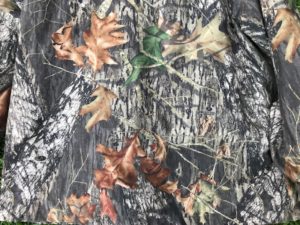The Kinglet Migration
Every April I set aside occasional moments to witness the migration of the kinglets. I’m impressed that anything that small can reliably wing it from southern USA to boreal Canada, and back. My method is to just pay attention to clumps of bushes and to hedgerows wherever I’m at, and look for movement of small solitary birds. If you slip slowly and quietly into the bushes and stand perfectly still, they will sometimes accept your presence and continue working the bushes, including quite close to your face. They constantly peck at almost invisible specks, which I assume are bugs, eggs, or larvae. They are constantly in motion and the ruby-crowned flicks it wings continually, the golden-crowned less so. This seemingly nervous behavior is understandable for a tiny critter near the bottom of the food chain.
During migration kinglets also join small flocks of other little bird species, especially resident chickadees. The ploy of entering and standing still in their thicket doesn’t work for me because the chickadees make a fuss and they all wind up flying away.
Actually we, here, are near the northern limits of overwintering for the golden-crowned kinglet, and a couple of times over the years I’ve noticed one in midwinter in our pine grove windbreak beside our house. I’ve never seen a ruby-crowned overwinter around here and the literature places them much further south in winter.
This year I got my reassurance early that things were OK in their world, and I turned my attention elsewhere. It was a wet April, ponds full and bottomlands squishy underfoot. So I decided to check out Iowa City’s South Sycamore Outlet Wetlands. The beavers took over management a decade ago, and not only flooded the wetlands a bit deeper than I designed, but build an attached dam and flooded the neighbor’s property, which fortunately already had an open-ended conservation easement and caused the owner no grief. In wet seasons like this April, much of it is too flooded to navigate on foot and you need a little raft or kayak.


These two panoramic views were taken about a decade ago, shortly after the beaver takeover. The Outlet Wetlands, now rather submerged, are on the right, the Saddlebrook conservation easement is on the left. The primary purpose of the Outlet Wetland system was stormwater management, plus wildlife habitat and recreation. As managed by the beavers, these goals are still being met.
Fortunately, there is a little elevated bluff available there, which makes an overlook and is conveniently close to the trail. So I set up my 60X spotting scope on its tripod in the edge of a clump of bushes and settled in on a camp chair to observe the South Sycamore wildlife. And to help remain inconspicuous, I was wearing my camo hunting jacket and shady hat.
A pair of sandhill cranes usually nest ever spring somewhere down in the valley bottom and I was hoping for a close up view of one of them out hunting.

Close up of the back of my camo jacket.
My preoccupation with the scope was interrupted by something small walking across my back. I’ve had twilight mice walk across my legs while sitting quietly in the woods observing, but they are usually near ground level. As it came up near the back of my neck, I could hear wings flick and my suspicions turned to small bird. As it came over my left arm, the yellow crown came into focus, lacking the orange center stripe, which said it was a female golden-crowned kinglet. We made eye contact for a moment, and with a flick of her wings she was gone. With my comparatively huge eyes, accentuated by my glasses, she probably thought that she had bumbled into a big owl. And in her fright she probably forgot about walking on those strange oak leaves that she couldn’t turn over to look for bugs on the underside.
So if your yard is too civilized to harbor some little migrants like kinglets or warblers, feel free to spend some quiet time at one of Bur Oak Land Trust’s properties.
Tags: bird migration, camouflage, kinglet, Lon Drake

